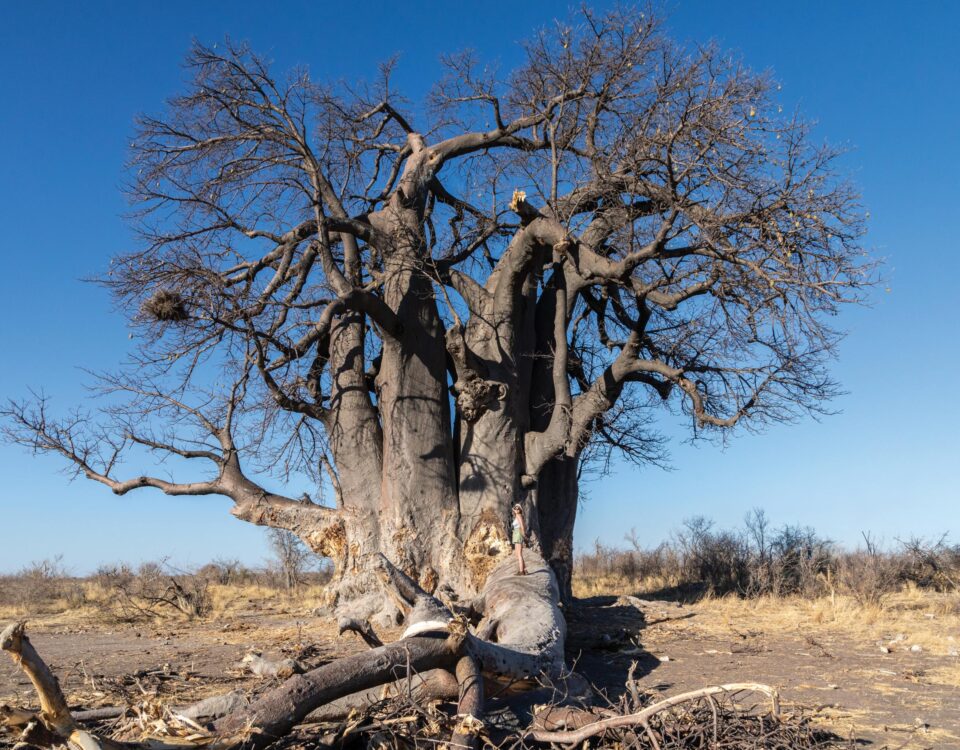Prosopis – the pros and cons
July 5, 2012The elusive Nama Padloper
July 5, 2012Project manager for the Namibian Wild Dog Project working in collaboration with the Namibian Nature Foundation, Ministry of Environment of Tourism and regional NGOs, Robin Lines, reports on the status of the wild dog in Namibia.
The decline of the African wild dog, Lycaon pictus, has been well documented over the past 30 years.
Distributed formerly throughout 39 sub-Saharan countries, there are only about 3 000 – 5 000 animals left today, inhabiting perhaps 14 countries. It is thought that there are only six to seven populations left that have more than 100 individuals.
According to the latest estimates, between 250–1 250 wild dogs occur in the isolated north east of Namibia, with only 5% of their range falling within protected areas.
The wild dog’s decline reflects the expansion of Africa’s human population and the associated fragmentation of habitat available to wildlife.
Because wild dogs live at low densities and have large home ranges, even fragments covering thousands of square kilometres will not support viable populations.
Packs often range beyond the borders of parks into land utilised for livestock farming. Thus even normally protected populations are subject to road kills, diseases contracted from domestic dogs and depletion of wild prey. Like other large predators, wild dogs kill livestock under certain circumstances, and have been shot, snared and poisoned in most livestock areas, irrespective of legal protection.
Although numerous research projects have focused on the natural history and behavioural ecology of wild dogs in their remnant strongholds (predominantly in semi-arid protected areas), no research has been conducted on arid habitat populations under multiple land-use tenure systems.
Moreover, very little rigorous data is available on economic impacts of livestock predation in comparison to other forms of stock loss throughout the wild dogs’ range.
Recent sightings of trans-boundary movements of large packs further emphasise the urgent need for research and the development of innovative management strategies for wild dogs in arid areas where the subdivision of land and conflict with farmers are major threats to wild-dog survival.
Carnivore–human conflict impacts significantly on wild dogs, so it is essential to achieve a better understanding of the genuine impact of predators, particularly endangered predators, and to find ways of mitigating the conflict. Only by evaluating the impact is it possible to determine the management strategies most likely to halt or reverse the wild dog’s decline towards extinction in Namibia.
Development of the highly successful Community Based Natural Resource Management (CBNRM) programme in Namibia has resulted in a broad expansion of communal conservancies. This has produced many opportunities for extension work and outreach projects assisting with equitable, reliable and wise use of natural resources. It is within this wider, long-term programme that the wild-dog project is grounded.
The Wild Dog project in the Otjozondjupa and Omaheke regions of Namibia has its origins in the communal cattle and small-stock farming Herero community in eastern Namibia. This area is part of the central Kalahari system, a semi-arid savannah with no perennial surface water.
People and their livestock are restricted to the western areas with boreholes and pipelines, and to the few ephemeral drainage lines that flow eastwards towards the Okavango system in Botswana. Large areas in the east are uninhabited or have a very low population density.
The central study area is also part of a national CBNRM programme. This programme, through national policy and recent legislative reform, works to create incentives for communal farmers to conserve, manage and benefit from wildlife and tourism.
The programme has three broad objectives:
• to rebuild and manage wildlife and other indigenous biodiversity sustainably;
• to generate income and diversify and improve livelihoods for communal farmers; and
• to empower and build capacity for management and development skills to help poor rural people break out of poverty and pro-actively determine their own futures.
The project is aimed at linking social and ecological approaches to conservation, working closely with people, looking at ways of reducing conflict, and trying to find ways of optimising benefits from wild dogs through tourism while understanding their ecology and movement patterns within the zone of actual and potential conflict.
The key to the success of this project is the active support from all those interested in conserving one of Namibia’s most endangered and charismatic species.
There are valuable opportunities for promotional project support and general donations towards the conservation of wild dogs.
This article appeared in the 2004/5 edition of Conservation and the Environment in Namibia.



